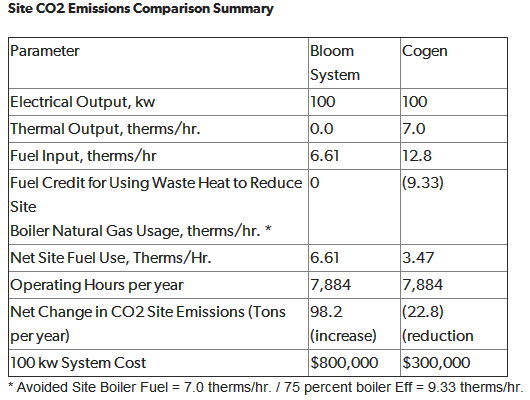mekennedy1313 wrote:
At $7000 to $8000 per kilowatt this isn't exactly groundbreaking nor is the technology new. Looks like another hype, get the investment dollars then announce a few years later the technology can't be made cheap enough to compete in the market.
I think they definitely have a niche to fill: people who want to build server farms on top of old landfills, for instance.
But yes, they aren't replacing steam turbines.
A similar technology will IMHO become an integral part of gas turbines, though.
Humus wrote:
Wonder of Prof Nocera's system can somehow provide the power - oxygen or hydrogen?
http://www.npr.org/templates/story/story.php?storyId=120613254
They have a lot of competition, too!
Photocatalysts are mostly exciting for a lot of other reasons, and I'm excited by the research there on several fronts.
A related technology makes CO using solar power. Although it's more toxic, CO is easier to store and is a more-concentrated fuel, and has an important place as a polymer feedstock. Making polymers out of photocatalytically reduced CO might sequester significant amounts of carbon.
By looking up the Wikipedia article for this post, I discovered that it's also possible to make methane directly from CO[sub]2[/sub] and water, with the right sort of photocatalyst. I don't think that's yet as efficient as growing biomass and digesting it anaerobically, though.
"the qualities of these bacteria, like the heat of the sun, electricity, or the qualities of metals, are part of the storehouse of knowledge of all men. They are manifestations of the laws of nature, free to all men and reserved exclusively to none." SCOTUS, Funk Bros. Seed Co. v. Kale Inoculant Co.








